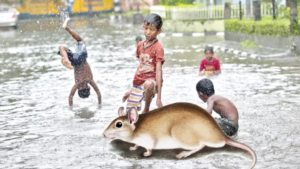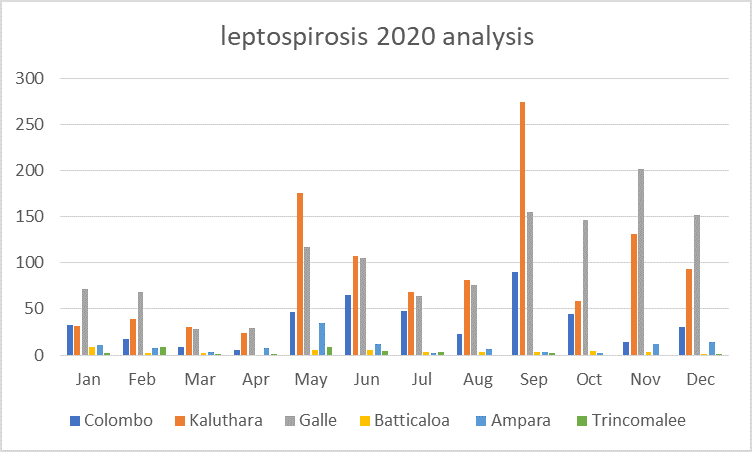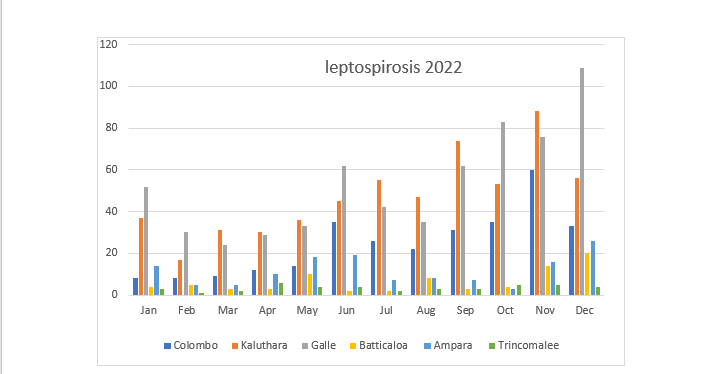Physical Address
23,24,25 & 26, 2nd Floor, Software Technology Park India, Opp: Garware Stadium,MIDC, Chikalthana, Aurangabad, Maharashtra – 431001 India
Physical Address
23,24,25 & 26, 2nd Floor, Software Technology Park India, Opp: Garware Stadium,MIDC, Chikalthana, Aurangabad, Maharashtra – 431001 India

Background of the Research
Leptospirosis is a bacterial disease that affects both humans and animals. Bacteria of the genus Leptospira cause it. Leptospirosis is a zoonotic disease found worldwide, especially in tropical and sub-tropical countries. Many animals carry the organism in their kidneys. It ends up in soil and water through their urine. So if you’re around soil or water where an infected animal has urinated, the germ can invade your body through breaks in your skin, like scratches, open wounds, or dry areas. It can also enter through your nose, mouth, or genitals.
Adverse effects of climate change, such as flash floods, droughts, and heavy rains, increase the risk of spreading leptospirosis disease. Without treatment, leptospirosis can lead to kidney damage, meningitis (inflammation of the membrane around the brain and spinal cord), liver failure, respiratory distress, and even death.
The climate fact checks research team used secondary data from the ministry of health and national disaster relief service center, NDRSC, ministry of defense of Sri Lanka.
The research study was conducted in three provinces, southern, western, and eastern. These provinces are the main provinces that are mainly affected by the monsoon rains. In addition, the number of leptospirosis patients from three provinces belonging to six districts such as Kaluthara, Colombo, Galle, Batticaloa, Ampara, and Trincomalee, was considered.
Study Locations

What we found
The country receives rain from two monsoons, and based on this, the country is divided into zones such as wet zone, dry zone, intermediate and arid zone. The Northeast monsoon is active from October to February, while the Southwest monsoon is active from May to September. Southern and western parts mainly receive rain from this monsoon. Inter monsoon period also gives rain to all our study locations, which can also be linked to the study. However, this research only focuses on Monsoon rains.
Descriptive statistics
According to the leptospirosis data analysis of the year 2018, the highest number of leptospirosis patients was recorded in November from the Kalutara district. Moreover, June and December also show increased leptospirosis-affected patients in the Kalutara district. It is the active period of the Southwest monsoon, which receives more rain in that area, and the total number of patients was 702.

Considering the data of the eastern province highest number of patients were recorded in the Ampara district, while the lowest number of patients were recorded in Batticaloa, which was 63. The total number of affected persons from all six districts was 1587. This is considerable because leptospirosis damages the human health system in several ways, giving life risks. According to the annual disaster data released by the national disaster relief service center, the total number of flood-affected people in 2018 was 195493. In addition, nearly 2200 people have been affected by heavy rain.

According to the 2020 analysis, again highest number of patients were recorded in the Kalutara district in September. There was a sharp increase in leptospirosis patients during May to December period. However, there is a slight decrease seen in July and August. This may be because of the drought that usually happen in July and August.

In the last year, leptospirosis patients have increased from June to November in the southern and western provinces. In addition, it is the active period of the Southwest monsoon. Therefore, we can conclude that this disease increases with the Monsoon, which is the same in the northern province. The northeast monsoon causes rain in this region. It is active from October to February. November – December months, Ampara and Batticaloa show a sharp increase in leptospirosis. Trincomalee also offers the highest number of patients from October to December and April. With these statistics, we can say there is a relationship between monsoon rain and leptospirosis disease.
Challenges in the prevention and control of leptospirosis in Sri Lanka
In Sri Lanka, most leptospirosis patients were due to occupational exposure in rural areas. Therefore, it is essential to understand the basic facts about the sources and mechanisms of disease transmission, which is vital for an effective prevention program. Doxycycline is given to high-risk farming communities during cultivation seasons as chemoprophylaxis. Knowledge, awareness, and people’s behavior are essential when considering primary prevention programs.
Weekly Epidemiology report (2017) stated that the Sri Lankan national program of Leptospirosis focuses on both reductions of incidence and case fatality rate (CFR) of leptospirosis and outbreak prevention. It also emphasizes strengthening surveillance, especially during paddy cultivation season, and improving inter-sectoral coordination with other key sectors such as agriculture, irrigation, and animal husbandry at the MOH level. According to our data analysis of recent years, we found that climate change induces leptospirosis disease circulation in southern, western, and eastern parts of the country. Climate change is something that many people don’t consider much, but this shows that it is a matter to be considered at the national level.
Research conducted by the geography and environmental management department of Sabaragamuwa University indicated the relationship between leptospirosis and floods in the Madirigiriya region. In addition to floods, they mentioned muddy paddy farming and livestock-rearing practices are also reasons for the spread of the disease among people.
Farmers in muddy paddy fields were identified as the most vulnerable to leptospirosis. This is because they use contaminated paddy water to wash their faces and hands, drink and fulfill sanitary requirements. Direct ways of exposure to flood water include walking through contaminated water and doing water sports without wearing protective costumes letting the bacteria sketch the human body. Leptospirosis exists worldwide, but it is more likely to be found in tropical climates. In addition, the risk of infection is higher after heavy rain or flooding.
In Conclusion
Several climate-related factors influence leptospiroses, such as flooding, heavy rain, temperature, and humidity. This research study also confirmed that seasonal changes, monsoons, floods, and rainfall influence leptospirosis spread in many regions. Furthermore, if the water or soil was contaminated with bacteria that cause leptospirosis, that person could be at risk for developing the disease. Therefore, Sri Lanka needs climate resilient health system to fight infections in the near future.